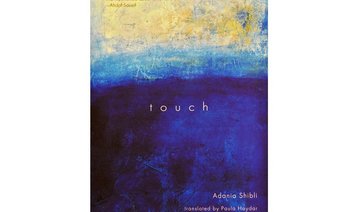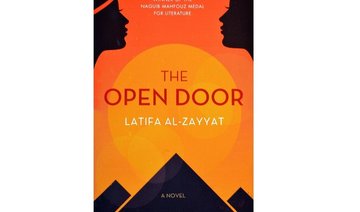It takes an expert to measure Broadway’s influence on Hollywood and vice versa, but American author Ethan Mordden has the knowledge and inimitable wit to do so. In “When Broadway Went to Hollywood,” Mordden takes us behind the scenes of the great Hollywood musicals we have loved for years and discusses the impact of Broadway musicals on the movie industry.
Broadway is the theatrical district in New York City that is well-known for being the American capital of musical theater and in this book, readers gain insight into how the influx of immigrants shaped this thriving creative hub.
During the 19th century, German and Scandinavian immigrants who entered the US moved to the Midwest where a large portion became farmers. The Irish, Italian and Jewish newcomers preferred to settle in the cities of the Northeast and many moved into the entertainment business, according to the book. In the 1920s, black talent also joined in to create a multi-cultural melting pot.
It was “The Jazz Singer” that started it all. Made in 1927, it was the first movie to feature sound sequences. Originally, the lead role was given to actor George Jessel. But Jessel is said to have made demands and Warner Brothers replaced him with Al Jolson. Al Jolson could sing and had an “electrifying” presence on stage, he had the power and the talent to let “the vocals leap off the screen, take the audience into the future,” writes Mordden. Jonson sang the song “Blue Skies” and it was an immediate hit with audiences.
“This is the song that invented the Hollywood musical as the centerpiece of The Jazz Singer’s most effective sound sequence,” explains Mordden. Written by Irving Berlin, whose first songs date back to 1907, “Blue Skies” and its emotionally-charged scene was the highlight of the film. “Like him or not, he has the energy that set the Hollywood musical on the way to the rest of its life.”
Irving Berlin soon discovered that Hollywood could not offer creative freedom due to the constant interference of studio chiefs and producers. However, Berlin got lured back to Hollywood to work on “Top Hat,” which only features five of his songs.
George Gershwin and his brother Ira were also part of a limited number of Broadway professional songwriters working for Hollywood. Gershwin’s fate was sealed during a concert entitled “An Experiment in Modern Music.” Heavyweights in Manhattan attended this unique event to hear Gershwin’s latest opus, “A Rhapsody in Blue.” It was a triumph and it got Gershwin on the cover of Time magazine. As expected, he was soon in high demand in Hollywood.
Cole Porter is another famous songwriter, but unlike other Broadway talents, he loved Hollywood. During an interview with American journalist Dorothy Kilgallen, he said: “When I first came here they told me, ‘You’ll be so bored you’ll die, nobody talks about anything but pictures.’ After I was here a week, I discovered I didn’t want to talk about anything else myself.”
Porter’s collaboration with Metro-Goldwyn-Mayer (MGM) worked out well thanks to the company’s decision to pair him with composer-arrangers Herbert Stothart and Roger Edens. “Their imagination in putting a number together with full awareness of how the music affects the optics was elemental in the dominance of the MGM musical,” writes Mordden.
From 1940 to 1949, another golden age began due to MGM’s musicals such as “Meet me in St. Louis” and “The Pirate.” From 1950 to 1959, Broadway adaptations become more popular than ever, but the breakup of the studio system with its music departments meant that musicals were more expensive to produce. Between 1960 and 1975, Hollywood experienced a golden era with the production of great musicals such as “West Side Story,” “My Fair Lady” and “The Sound of Music.”
From 1976 to the present, Hollywood has flooded Broadway with stage versions of original Hollywood musicals such as “Gigi,” “Singin’ in the Rain” and “Footloose.” Hollywood also produced movie versions of famous Broadway shows, such as “Annie,” which was a hit on Broadway from 1977 to 1983. This should have been an easy production until John Huston was hired to direct the movie. The choreography in Annie involved lots of non-athletic acrobatics who lacked grace and beauty and some of the show’s best numbers were dropped. “It was an expensive mistake at the cost of something like a million dollars, and one of the reasons Annie did good business and still lost money,” Mordden wrote of the expensive movie-making process and the talented stars who came on board but whose suggestions were never used.
Fast forward to today and “La La Land,” a musical specially written for the silver screen, has been a resounding success. “Musicals are back,” writes Mordden. but had they ever disappeared? Can they disappear? With the crushing pressure of world events, we all need a place to escape to.
Book Review: How Broadway took Hollywood by storm
Book Review: How Broadway took Hollywood by storm

What We Are Reading Today: ‘Breaking the Mold’

Authors: RAGHURAM G. RAJAN AND ROHIT LAMBA
India’s economy has overtaken the United Kingdom’s to become the fifth-largest in the world, but it is still only one-fifth the size of China’s, and India’s economic growth is too slow to provide jobs for millions of its ambitious youth.
In “Breaking the Mold,” Raghuram Rajan and Rohit Lamba show why and how India needs to blaze a new path if it’s to succeed.
What We Are Reading Today: ‘The Things You Can See Only When You Slow Down’

Author: Haemin Sunim
“The Things You Can See Only When You Slow Down: How to be Calm in a Busy World” offers advice on how to find inner peace in today’s busy world.
The 300-page book, published in 2017, was written by Haemin Sunim, a Korean Buddhist monk, and has sold more than 3 million copies.
The author underwent monastic training in South Korea before spending seven years teaching Asian religions at Hampshire College in the US. The book elaborates on the wisdom he gained from personal experiences as a Buddhist monk.
One of the book’s strengths is its simplicity. The author’s writing style is easy to understand as he presents his ideas in bite-sized chapters, each focusing on a different aspect of mindfulness.
Whether he is writing about the meaning of silence or of gratitude, Sunim’s words resonate with a quiet authority which prompts the reader to pause and reflect on their own lives.
In addition, the book is filled with amazing imagery that complements the stories. The beautiful drawings contribute to Sunim’s narrative and create a sense of serenity and peace.
The author emphasizes the concept of enjoying the little things in life to the fullest, such as drinking a cup of tea in the morning, taking a walk in nature, or having a thoughtful conversation with loved ones.
Slowing down allows people to notice the happiness hidden in even the simplest tasks and moments, he claims.
He also encourages readers to be kind to themselves and offers advice on how people can develop a deeper sense of self-acceptance and self-love, fostering emotional well-being and resilience.
Sunim’s wisdom and compassion are clear. His words remind readers that despite the noise and distractions of the modern world, true happiness can be found when they slow down.
What We Are Reading Today: Out of One, Many

Author: Jennifer T. Roberts
Covering the whole of the ancient Greek experience from its beginnings late in the third millennium BCE to the Roman conquest in 30 BCE, “Out of One, Many” is an accessible and lively introduction to the Greeks and their ways of living and thinking. In this fresh and witty exploration of the thought, culture, society, and history of the Greeks, Jennifer Roberts traces not only the common values that united them across the seas and the centuries, but also the enormous diversity in their ideas and beliefs.
Examining the huge importance to the Greeks of religion, mythology, the Homeric epics, tragic and comic drama, philosophy, and the city-state, the book offers shifting perspectives on an extraordinary and astonishingly creative people.
Century after century, in one medium after another, the Greeks addressed big questions, many of which are still very much with us, from whether gods exist and what happens after we die to what political system is best and how we can know what is real. Yet for all their virtues, Greek men set themselves apart from women and foreigners and profited from the unpaid labor of enslaved workers, and the book also looks at the mixed legacy of the ancient Greeks today.
The result is a rich, wide-ranging, and compelling history of a fascinating and profoundly influential culture in all its complexity—and the myriad ways, good and bad, it continues to shape us today.
What We Are Reading Today: ‘If Cats Disappeared from the World’

- Beautifully written and emotionally moving, it is also a testament to the power of storytelling and reminds people of the deep impact of making personal choices and connections
Author: Genki Kawamura
“If Cats Disappeared from the World” is a novel written by Japanese author Genki Kawamura. The book was published in 2012 and was rated 4/5 by over 75,000 readers worldwide.
Kawamura is a worldwide bestselling author. “If Cats Disappeared from the World” was his first novel, which sold over 1 million copies in Japan and was translated into over 14 languages.
In this novel, Kawamura tells the story of a postman who is diagnosed with an uncurable illness. However, when he accepts his destiny, the Devil appears to him with an unusual proposal. The postman must choose one thing to eliminate from this world for him to live one more day. During his journey, the postman then starts examining the true value of everything he owns.
Kawamura’s writing style is simple yet evocative, inviting readers to dive deep into the layers of their own emotional journey with every page. The narrative provides a delicate balance between moments of happiness and sorrow, using cats as a symbol of companionship and joy.
Moreover, the book allows readers to reflect on the value of relationships and experiences. It raises questions regarding the decisions people make, the legacies they leave behind, and the core meaning of everyday moments, which eventually shape people’s characters and how they think.
The novel encourages people to take a deep breath and reflect on the blessings people have, yet neglect, due to their busy lives.
With Kawamura’s thoughtful message and memorable characters, this novel is a compelling exploration of the human experience, providing comfort and inspiration, and a new appreciation for the beauty and brevity of life.
Beautifully written and emotionally moving, it is also a testament to the power of storytelling and reminds people of the deep impact of making personal choices and connections.
What We Are Reading Today: ‘Chinese Espresso’ by Grazia Ting Deng

Italians regard espresso as a quintessentially Italian cultural product—so much so that Italy has applied to add Italian espresso to UNESCO’s official list of intangible heritages of humanity. In this book, Grazia Ting Deng explores the paradox of “Chinese Espresso”— the fact that this most distinctive Italian social and cultural tradition is being preserved by Chinese immigrants and their racially diverse clientele.




















